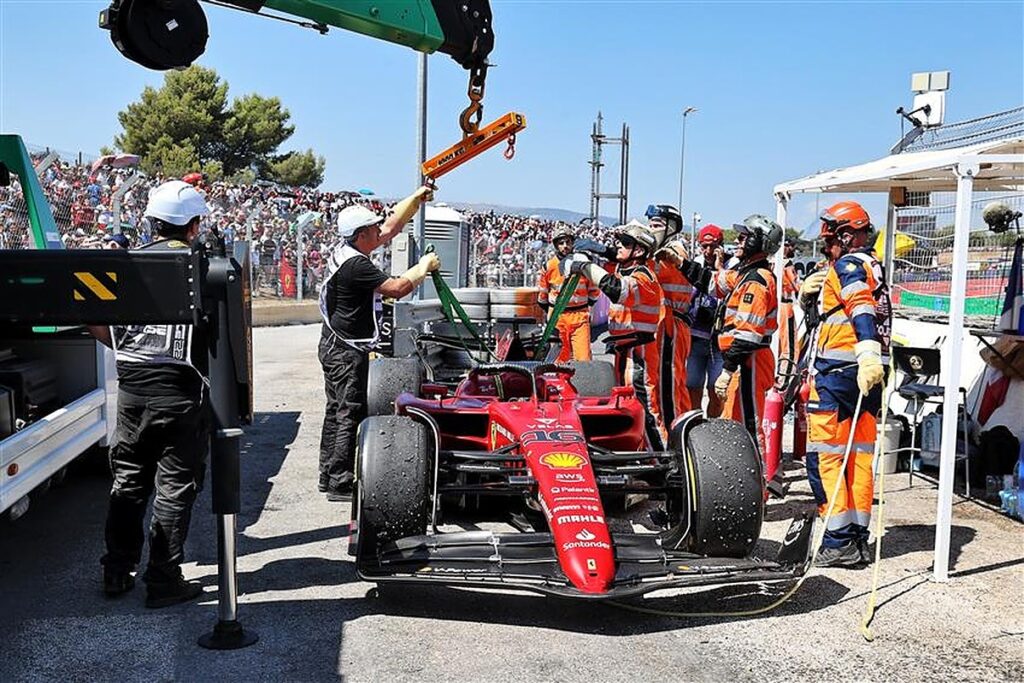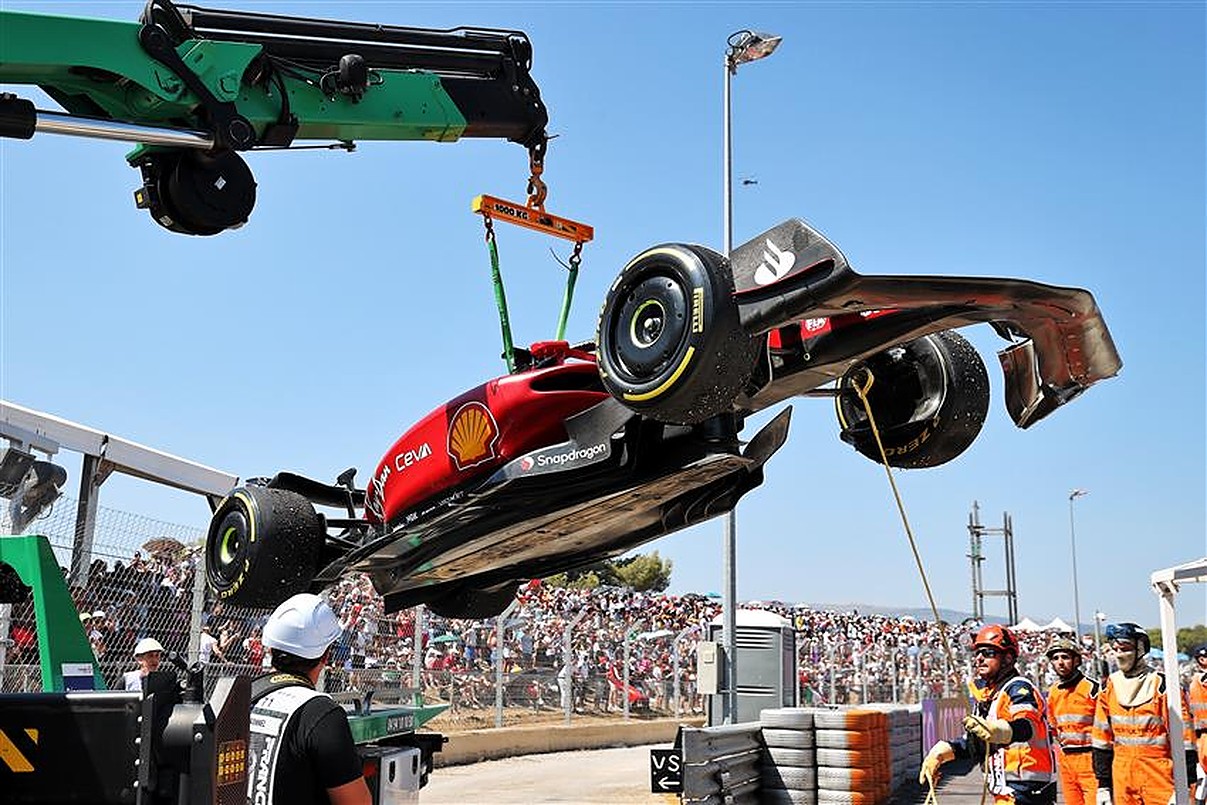Red Bull and Ferrari do not believe that Charles Leclerc’s accident at last weekend’s French Grand Prix was at all related to “porpoising” and bouncing.
The phenomenon has appeared this season amid the arrival of the new technical regulations, which have brought about the return of ground effect aerodynamics.
It meant a complete change to the design of both the floor and the chassis, and issues began to arise for some teams, including Mercedes.
The turbulence of the W13, perhaps exacerbated by their skinny sidepods, caused “porpoising,” before the floor started whacking the track surface when they fixed it.

READ: Charles Leclerc: ‘I’m going to close myself at home’
Not only did this start affecting their performance, but it also became a safety issue, as evidenced by Sir Lewis Hamilton hobbling away from his car in Baku.
In response to safety concerns, the FIA introduced a technical directive at the Canadian Grand Prix that saw them employ a metric for oscillating movement.
This will help them set a limit for bouncing, and the stewards can ask teams to raise their ride height by 10 millimetres if there is too much bouncing going on.
As a biproduct of the measurements they took of the cars, they found that some teams have been using planks that deflect more than 2mm in parts that are not covered by regulation.
Further, they discovered moving skid blocks that disappear into the rest of the plank to reduce its wear, so this will be banned as of the Belgian Grand Prix.
The effect the changes might have on performance have led to Ferrari and Red Bull suggesting that Mercedes are using safety to get the FIA to change the rules in their favour as they try to climb back to the front of the grid.
Piero Ferrari, vice chairman of Ferrari, accused the German side of taking “shortcuts” to recover their pace deficit, but there is more.
For next season, the governing body has proposed changes to the technical regulations that will raise the front wing edges of 25mm, while the diffuser throat will also be lifted.
Ironically, raising the ride height of the car is all Mercedes need to do to counter bouncing in the eyes of the leading two teams, but they believe the eight-time champions are trying to influence the FIA because of the adverse effect this would have on their performance in the corners.
The raft of changes in the pipeline for 2023 “turns aerodynamics upside down,” according to Red Bull adviser Dr Helmut Marko, while team principal Christian Horner affirmed “it’s ten minutes after midnight.”
This is in reference to the fact that the teams have already started work on next year’s cars, so they would have to go back and start from scratch if the changes go through.
READ: Mattia Binotto: ‘Could something happen to Max Verstappen and Red Bull?’
Ferrari boss Mattia Binotto confirmed, quoted by Auto Motor und Sport, that the teams had reached a middle ground as to exactly how much things should change.
“At a meeting of technical engineers, the majority was in favour of our compromise proposal,” explained the Italian.
With the teams, the FIA and Formula One Management (FOM) all having a say in the direction of the sport, Horner accepts that a compromise os often needed to suit all parties.
“In the end, as always, we will end up with a compromise in our business, the only question is what it will look like,” he explained.
Leclerc crashed out of the race in Le Castellet last Sunday when he lost control at Turn 11, and it is reported by Auto Motor und Sport that Mercedes have tried to use this as evidence of the effect “porpoising” and bouncing can have on the car.
Both Red Bull and Ferrari have stated that this is incorrect after Leclerc himself admitted that it was driver error.

